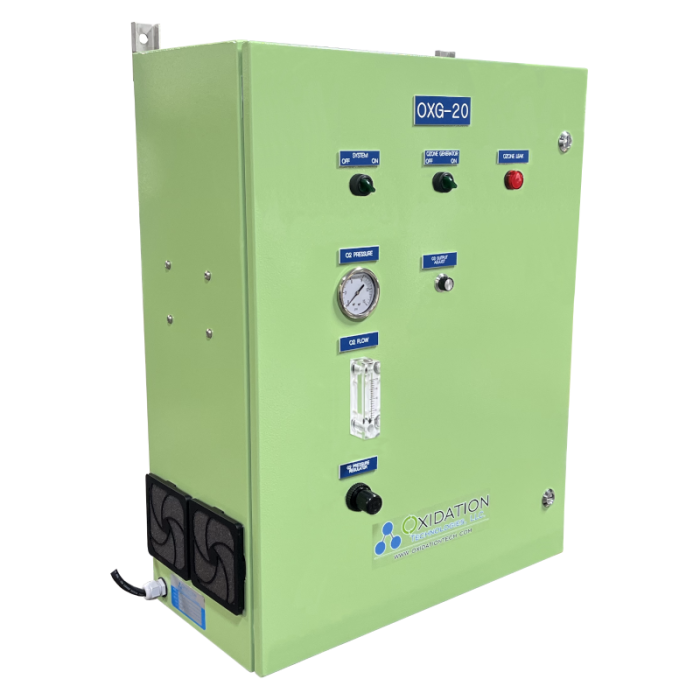In today’s era of heightened environmental awareness, conservation is at the forefront of discussions across various industries. This commitment to sustainability extends to water industrial solutions, where the focus is not only on addressing water treatment needs but also on ensuring that power savings are integral to the solutions provided. Achieving energy efficiency in ozone system design is crucial, and it requires a delicate balance between capital expenditures (CAPEX) and operational expenditures (OPEX).
Understanding the Power Dynamics of Ozone Generation:
Ozone generation is inherently tied to power consumption, playing a pivotal role in the water treatment process. High voltage power is utilized to split oxygen molecules, producing ozone. The power requirements extend to producing chilled water for cooling ozone electrodes and injecting ozone into the treatment process. Additionally, power is employed to eliminate any unused ozone. Given the substantial power demands of ozone production and implementation, it becomes imperative to explore designs that minimize power requirements.
Key Strategies for Energy Efficiency:
1. Ozone Generators:
Today, the primary consideration when selecting an ozone generator is its energy efficiency. Ozone production consumes power in two main ways:
- Production of Ozone: The energy efficiency of ozone generators is measured in watts per gram of ozone produced. The most energy-efficient ozone systems today can produce ozone from oxygen at less than 8 W per gram of ozone, surpassing conventional systems.
- Chilled Water Requirement: Traditional ozone generators often necessitate chilled water at low temperatures (12-20 degrees Celsius) to cool ozone electrodes. Energy-efficient designs can now produce ozone with cooling water temperatures as high as 35 degrees Celsius, utilizing closed-loop heat exchangers instead of traditional chillers.
2. Air or Oxygen Feed:
The choice between air and oxygen feed depends on the specific application and the required air-liquid ratio when diffusers are used for ozone contacting. While air preparation may incur operational expenses (OPEX), oxygen preparation may lead to higher capital expenses (CAPEX). The application’s nature will dictate whether air or oxygen feed is more suitable, and a careful selection is essential to optimize system efficacy.
3. Diffusers or Injectors:
The method of ozone injection also impacts energy efficiency. Using an air feed and injection system may demand significant energy due to the handling of large gas volumes. Alternatively, diffusers, which rely on the air-liquid ratio in the ozone contactor, can be more energy-efficient, especially for treating large volumes of water. Opting for energy-efficient pumps and injectors in injection systems further contributes to OPEX savings.
Conclusion: A Holistic Approach to Efficiency
Achieving energy efficiency in ozone system design requires a holistic approach that encompasses generator technology, choice of feed gas, and injection methods. Striking the right balance between CAPEX and OPEX is essential for sustainable water treatment solutions. As industries evolve, the focus on energy efficiency in ozone systems is not just a choice; it’s a responsibility to contribute to a greener and more sustainable future. For tailored solutions that align with your unique requirements, consulting with industry experts and exploring advancements in ozone technology is key.


This article brilliantly highlights the importance of striking a balance between power savings and performance in ozone system design. It’s insightful to see how optimizing energy efficiency can lead to significant cost savings without compromising effectiveness. As industries increasingly prioritize sustainability, this emphasis on efficient ozone system design is both timely and impactful. Kudos to the author for shedding light on this crucial aspect of environmental technology.